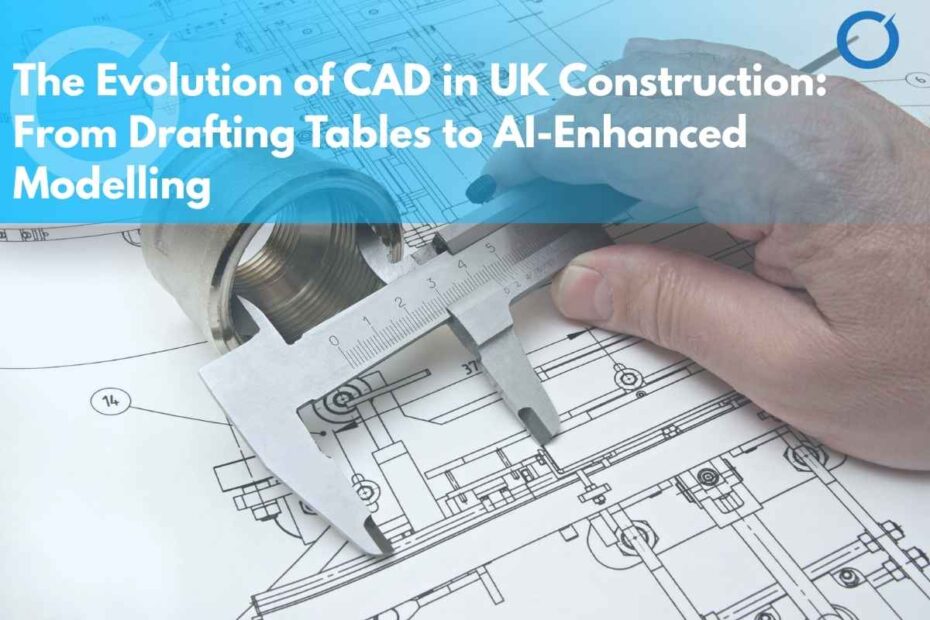The landscape of Computer-Aided Design (CAD) in the UK construction industry has undergone a seismic shift over the past few decades. In 2025, the dominance of AI-driven software and integrated digital workflows reflects how far we’ve come from the early days of 2D drafting. This article explores how the CAD journey in the UK has matured into an essential part of the built environment, from production drawings and building layout plans to AI-integrated simulations.
A Look Back: From Paper to Precision
In the 1980s and 1990s, traditional drafting tables were common across architectural and engineering firms. Designers would spend hours creating technical drawings by hand. The introduction of AutoCAD in the late 20th century revolutionised the drafting process, replacing rulers and pencils with digital precision. By the early 2000s, CAD drawing services had become standard for any serious architectural or engineering firm in the UK.
BIM (Building Information Modelling) made headlines in 2015 when Level 2 BIM became mandatory for public sector construction projects in the UK. That requirement signalled a cultural shift toward intelligent, data-driven workflows. Suddenly, CAD wasn’t just about linework—it was about information management across a building’s entire life cycle.
CAD in 2025: What’s Changed?
Fast forward to 2025, and CAD is now an umbrella for a wide range of technologies:
- 3D CAD Drawing Services offer fully immersive representations of structures.
- CAD Design Engineers work in tandem with AI tools to optimise structural integrity.
- Construction Detail Drawing is supported by cloud-based revision histories and real-time site feedback.
- Computer-Aided Design Companies are merging with data consultancies to offer full lifecycle support.
The UK Construction Innovation Survey (2025) found that 78% of architectural firms now rely on AI-enhanced CAD tools to deliver more accurate and cost-efficient projects.
Key CAD-related keywords covered: production drawings, 3d cad drawing services, cad designing company, computer aided design companies, cad design engineer.
Regulatory Framework and Golden Thread Compliance
The 2025 updates to the Building Safety Act require a digital “Golden Thread” of information from concept to post-occupancy. This has reshaped the importance of maintaining meticulous CAD files. From home drawing plans to large-scale infrastructure, every CAD drawing must be:
- Compliant with BS 1192 and ISO 19650 standards.
- Fully traceable through cloud-based CDEs (Common Data Environments).
- Compatible with planning authorities for submission-ready dwg plans and technical drawings.
Talent and Training Gap
Despite these advancements, the 2025 RICS Workforce Development Report highlights a critical skills gap:
- Only 52% of CAD technicians feel confident using parametric modelling software.
- The average CAD technician in the UK receives just 3.5 days of software training annually.
- 67% of firms report difficulty finding staff skilled in both 2D and 3D CAD drafting.
This has led to a boom in specialist CAD training centres, offering certifications in everything from autocad uk to AI-enhanced cad rendering.
What’s Ahead for UK CAD?
- Integration with AR/VR: By 2027, 40% of UK construction firms expect to integrate AR walk-throughs linked directly to CAD models.
- AI-Driven Design: AI is no longer just a tool but a collaborator, adjusting floor plans and layouts in real time.
- Sustainability Modelling: More projects now include embedded carbon data directly into CAD drawings for tracking lifecycle emissions.
Final Thoughts
The journey from manual drafting to today’s interconnected CAD environment reflects a deeper transformation in how the UK builds. Today, mastering CAD is not just a skill—it’s a strategic advantage.
Firms that invest in smarter tools and experienced partners for CAD drafting, architectural drafting services, and MEP coordination aren’t just designing buildings—they’re actively shaping the future of British infrastructure.
For outsourced support across 2D and 3D CAD services, Contact Us Now.
